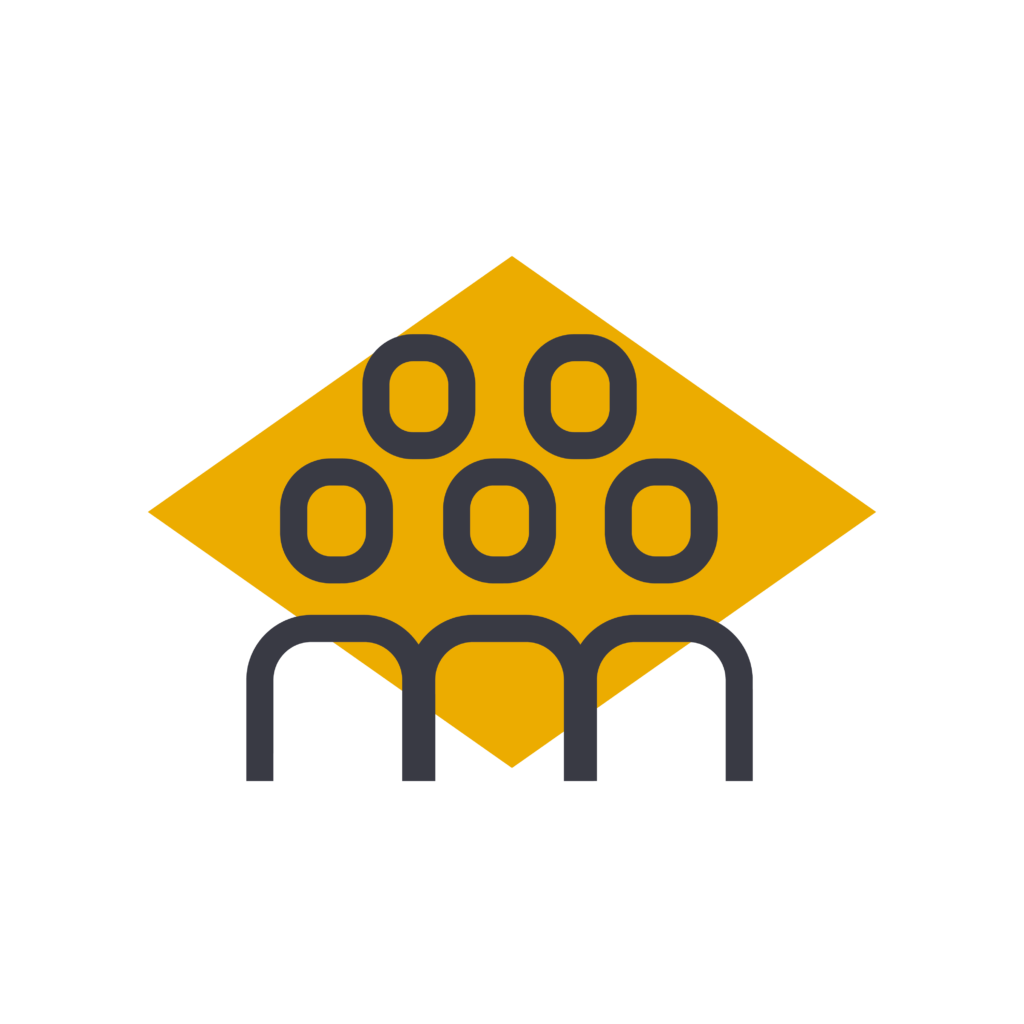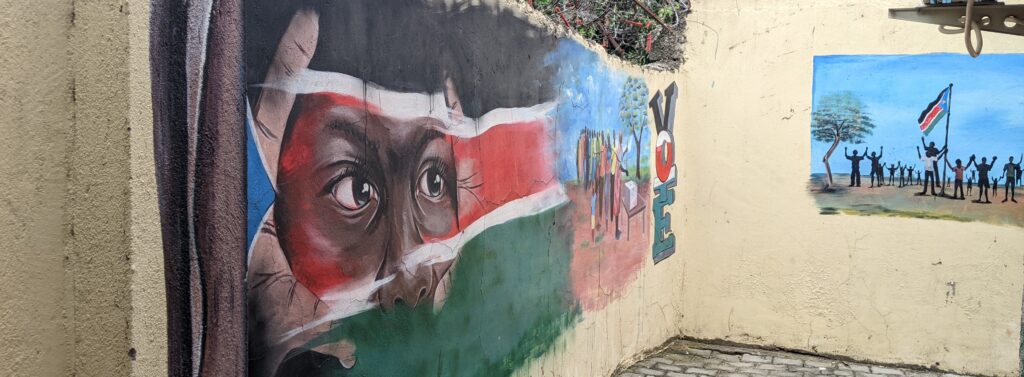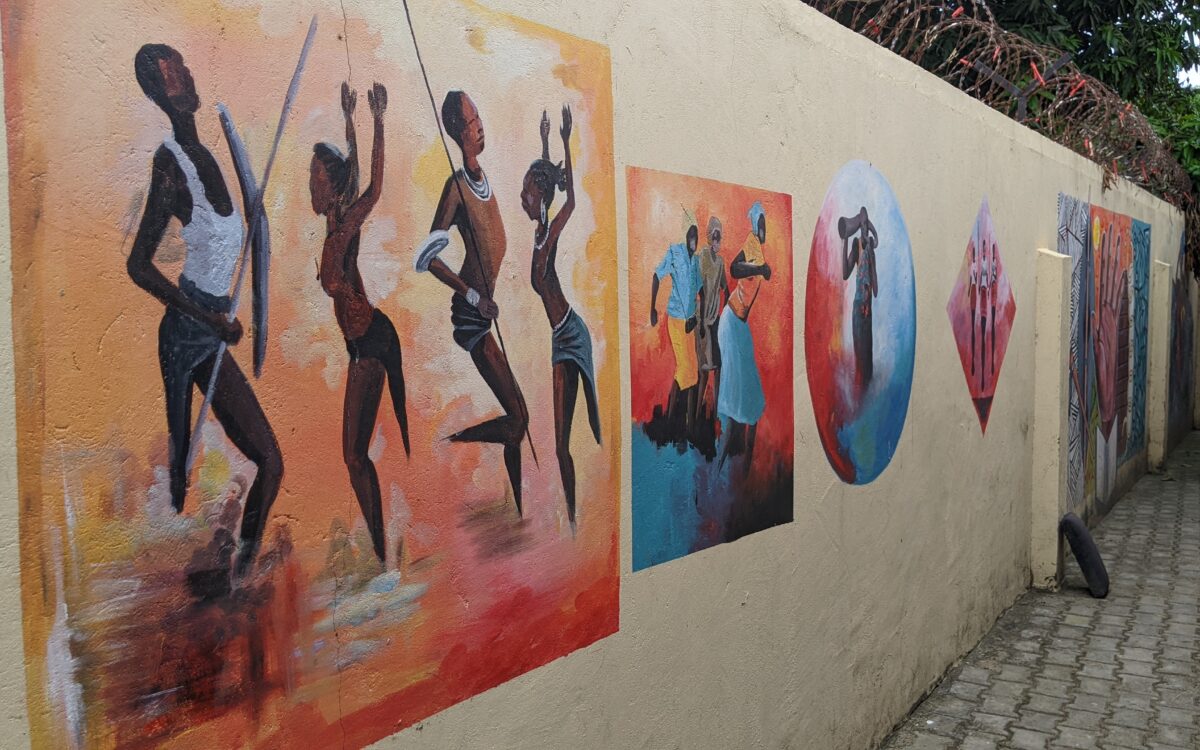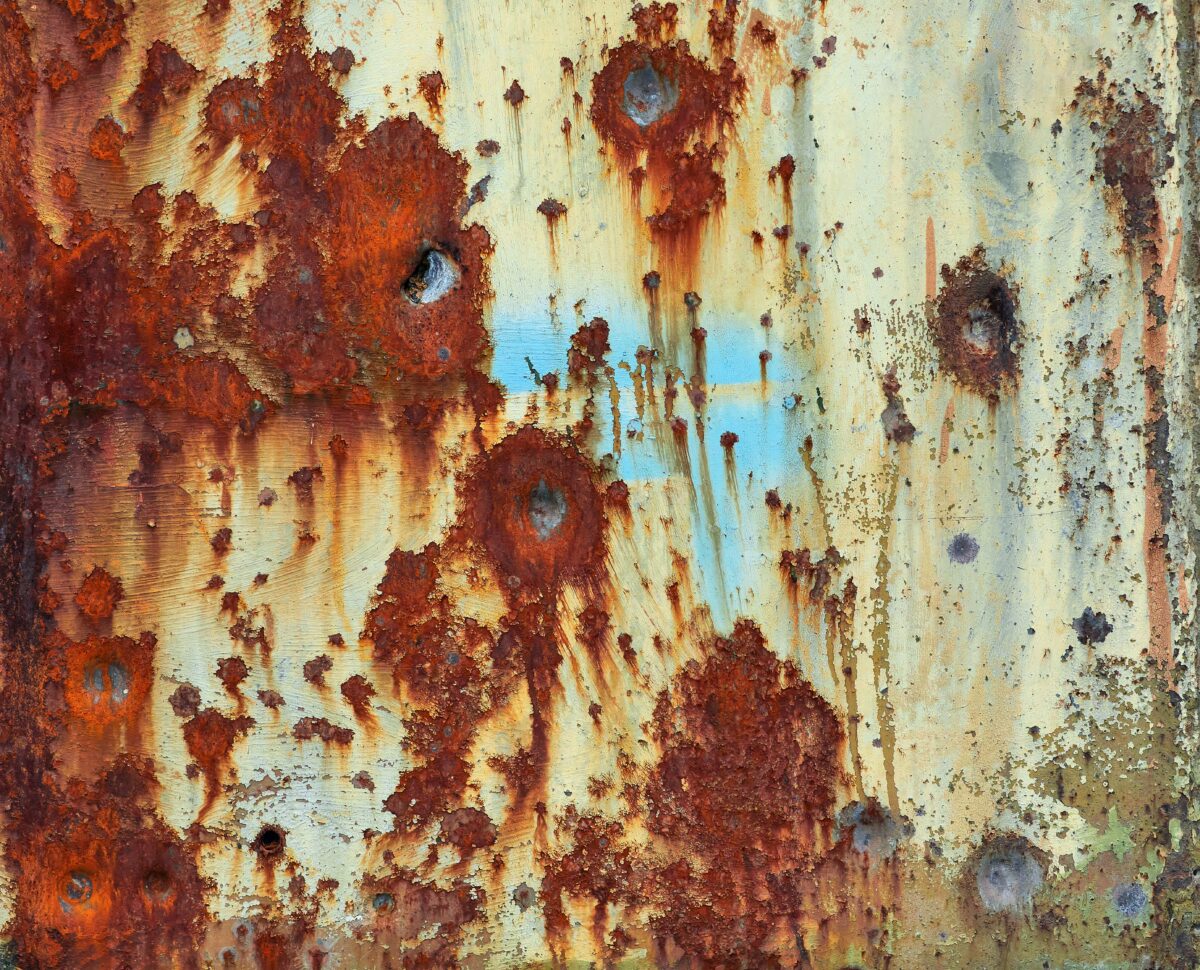
Dr Sayra van den Berg
‘As I work through the memories and material of this fieldwork, it’s clear I am at the beginning of an insightful and humbling journey…’
In a context where statehood has been crafted through violence between political elites, South Sudanese activists and civil society are carving out creative spaces for reconciliation and resistance. In my work in South Sudan, I look to the arts – music, painting, theatre, literature, and beyond – as creative spaces for expressing and processing wartime experiences and postwar hopes, to build an ethnographic understanding of individual life histories.
In October I arrived in Juba to begin fieldwork for the Civil War Paths project. Having never travelled to South Sudan before I was (and am) acutely aware of the totality of my ‘outsiderness’ in an environment where experiences of war are both ubiquitous and recent. This stands in contrast to my previous experience conducting long-term fieldwork in Sierra Leone, a postwar environment where civil war ended over 20 years ago. Fascinated by the dynamic space for political expression within the arts, I spent three weeks interviewing artists, activists, and civil society (many of my interviewees occupy several of these categories simultaneously) to begin the ethnographic process of understanding wartime experiences in South Sudan. As I continue to sift through the many layers of meaning contained within my observations and interviews in Juba, I find myself reflecting on the thrills and challenges of using the arts to understand individual wartime experiences in South Sudan.
Justice within performance
As a transitional justice scholar, I am particularly thrilled at the opportunity that the use of arts presents. So much of transitional justice research, including my own, is confined to the field’s formal mechanisms, and correspondingly quite pessimistic in its findings. Indeed, the field has produced a highly granular understanding of the ways in which formal transitional justice processes fail in their ambitions and mandates. And yet, within this critical literature, the seeds of optimism are now flowering – within research that invites us to look not only at the failings of formal transitional justice, but also to acknowledge the successes, and potential, of its more unexpected expressions, including through the arts. Where formal transitional justice has been criticised as merely a performance of justice, scholars now seek to understand the justice contained within performance (as one of many forms of the arts), as unconventional sites of transitional justice. It is this body of work that motivates me to look to the arts as sites of ethnography in conflict research, inspired by the need to remain critical, but with the hope to become optimistic too.
My first weeks in Juba have allowed this seed of hope to germinate. Initially I was disheartened by the overly technical approach to transitional justice shared with me by members of civil society and its dissonance among artists. But when I let go of framing my research in the language of transitional justice and focused instead on its goals and practice, I found overwhelming evidence of hope and opportunity in the transitional justice qualities of the arts in Juba.
The possibility that the arts provide to deepen ethnographic engagement is further cause for enthusiasm. With this approach I strive to engage a fuller range of senses and memories to excavate an understanding of South Sudan’s civil war path. As spaces for expression, the arts engage a wider ‘local cultural ecology of communication’ and allow multiple and even competing memories to crystalise from the imaginaries of their makers. This is particularly significant in a context such as South Sudan, whose (official) history and continuities of violence remain disputed.
Political cartoons are an artistic space where competing memories co-exist. In an environment otherwise characterised by its narrow space for freedom of expression, political cartoons boldly criticise Government officials and international actors alike, and at times are condemned but also applauded by the very actors which are damned in them.

Participation ‘on their own terms’
The decision to anchor my ethnography in the arts was also borne out of need. Despite extensive experience conducting interviews with ex-combatants in another post-war context, in preparing for this field research in Juba I was confronted with the reality that what is possible in one context is not in another. In my previous research I was able to hold candid interviews with ex-combatants on a war that ended two decades ago and where accountability mechanisms have completed their mandates. The reality of South Sudan, where peace exists largely on paper, where the architects and participants of violence remain in power and where accountability is considered a far distant dream, creates barriers to engagement that requires heightened fieldwork sensitivity.
Using the arts to understand war and peace at the individual level responds to this by engaging with the themes of war, including distrust, corruption and displacement, on my research participants’ own terms, by using their own art as the anchor for engagement. For some artists their art grieves the invisibility of violence in their homes, while for others it documents the erasure of culture through displacement. In all cases art provides a point of access into their personal life histories and taps into their particular experiences of loss, violence and hope. Furthermore, the public nature of these artistic spaces has been a consistent indication of an individual’s openness to engage on the very themes contained within these works.
Ownership and reflexivity
Finally, and perhaps most enduringly, this research approach has forced me to contend with a different version of the existential question that haunts ethnography: how do we make meaning of someone else’s experiences? How can I possibly attach analytical meaning onto work (art) that isn’t mine? Or to experiences that I can’t relate to? Grappling with this challenge is an ongoing issue. Nuance that is obvious to artists and local audiences is largely invisible to me. I confront this challenge by centralising the artists’ own accounts of their works in my research. In future, I will build on this practice by engaging with local audiences, that is, the individuals and communities in South Sudan who engage with, and are exposed to, these works. This is how I hope to further access and excavate competing memories of individual wartime experiences in South Sudan.
The task of meaning-making in ethnography is a constant and necessary reminder of the hurdles that accompany our positionality as researchers. For me this means navigating my ambition to centralise the voices of my respondents while acknowledging the reality of my ‘outsiderness’. Reflexivity is key. It allows me to understand my positionality not as a problem I need to solve but rather a reality I need to manage.
As I work through the memories and material of this fieldwork, it’s clear I am at the beginning of an insightful and humbling journey. So far I’ve learned that artistic political spaces in South Sudan are carving out a new civic space in a country straightjacketed by Government interference, that these spaces are fundamentally concerned with transformation, and pursue this in different ways. I’m particularly fascinated by the unrecognised transitional justice qualities of these artistic platforms, and I have so much to learn about this complex space that creatively narrates war and peace, but which despite its dynamism does not wholly escape from the reach of the state.

